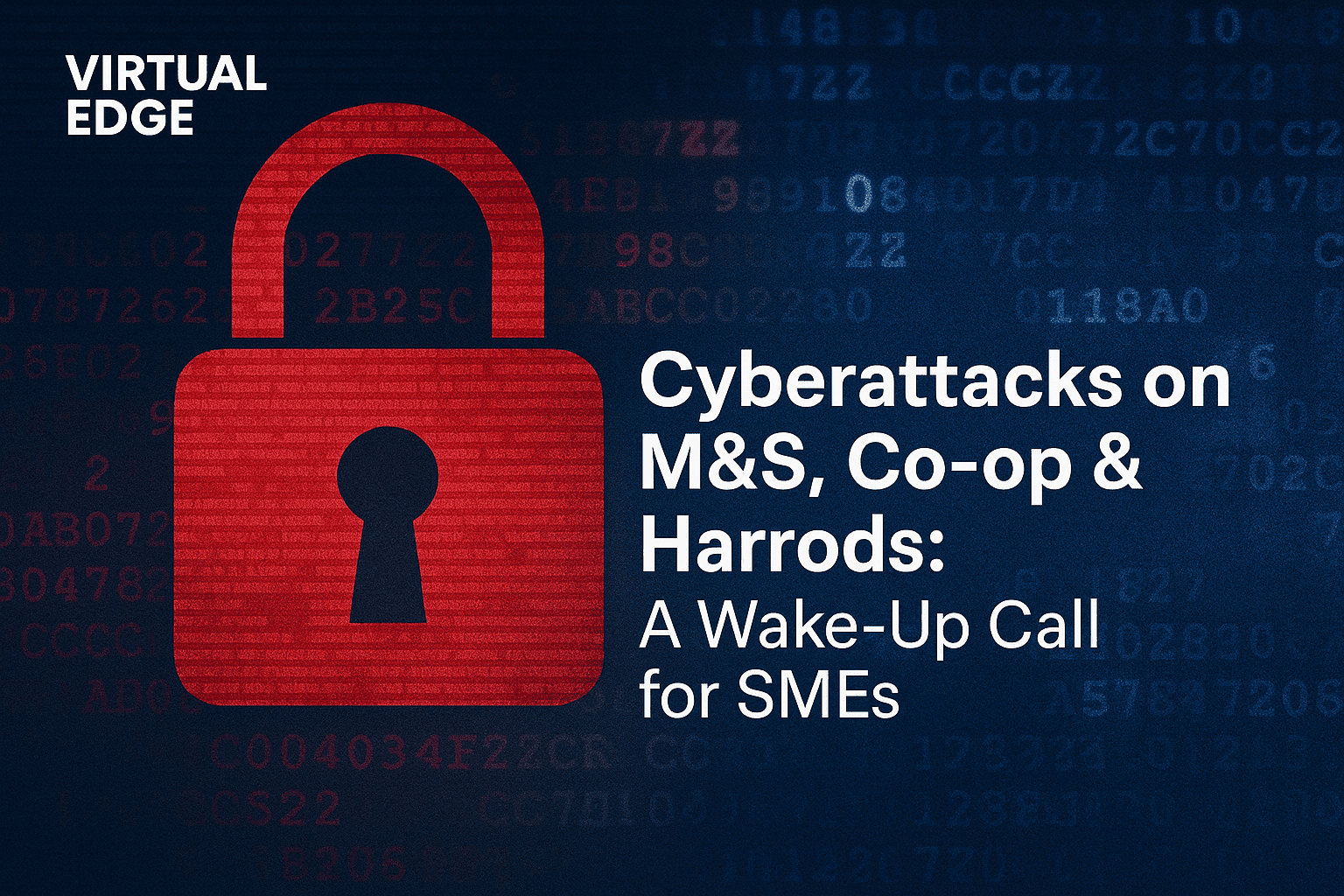When Giants Fall: What Cyberattacks on M&S, Co‑op & Harrods Mean for Your Business
When trusted household names like Marks & Spencer, Co‑op, and Harrods are brought to their knees by cyberattacks, it’s not just their IT departments that should pay attention. For UK small and medium-sized businesses (SMEs), it’s a blunt reminder:
If the big guys can fall, what’s protecting you?
Three Attacks. One Message: No One Is Immune.
M&S: Operations Frozen
In April, M&S suffered a major ransomware attack that halted click-and-collect orders and crippled internal systems. The suspected culprits? A notorious group known as Scattered Spider. The result? Chaos and over £600 million wiped off their market value in days.
Co‑op: Data Breach Fallout
Weeks later, Co‑operative Group was hit with a cyberattack targeting its supply chain. Internal disruptions followed, and thousands of customer records were compromised exposing names, emails, and dates of birth.
Harrods: A Close Call
Harrods acted fast after detecting suspicious activity. Their quick response likely avoided a bigger disaster but the breach still forced temporary system shutdowns and caused significant operational delays.
How the Hackers Got In
These weren’t zero-day exploits or high-end nation-state attacks. Instead, hackers:
- Posed as IT staff to gain trust and access
- Exploited weak helpdesk processes
- Used MFA fatigue tactics to sneak past defences
It wasn’t just tech that failed. It was people and processes something many SMEs overlook.
What SMEs Often Miss
Many small businesses still believe:
“We’re too small to be a target.”
But today’s cybercriminals don’t discriminate. They automate. They scan. They exploit any door left open and SMEs often leave them wide open:
- Outdated systems
- Weak passwords
- No employee training
- No backup or recovery plan
Even if you’re not a household name, you’re still part of a supply chain, hold valuable client data, or run systems that can be hijacked for profit.
SME Cyber Resilience Checklist
Here’s how smart SMEs are protecting themselves in 2025:
1. Multi-Factor Authentication Everywhere
If you’re not using MFA, you’re not serious about security.
2. Train Your Team to Spot the Fakes
Phishing, impersonation, and social engineering are the top SME threats. Regular, realistic training matters.
3. Backup Like Your Business Depends on It
Because it does. Use immutable, offsite backups and test recovery regularly.
4. Keep Your Systems Patched
Out-of-date software is an open door. Patch early, patch often.
5. Build a Response Plan (Before You Need It)
Know who does what if you’re hit. Don’t wait until you’re in the middle of a breach to figure it out.
6. Get Certified (Cyber Essentials is a Great Start)
Proving your business takes security seriously builds trust and can lower cyber insurance premiums.
Don’t Let a Headline Be Your Wake-Up Call
These attacks aren’t just cautionary tales they’re blueprints. Cybercriminals are watching how big companies respond, so they can replicate and scale down their tactics to hit SMEs that aren’t prepared.
At Virtual Edge, we help SMEs implement affordable, enterprise-grade security without the complexity or jargon. From cyber audits to staff awareness training and 24/7 support, we make security simple and scalable.
Final Thought
Downtime, data loss, and reputational damage aren’t just enterprise problems. They’re business killers.
The best time to secure your business was yesterday. The second-best time? Today.
Let’s keep your business protected, productive, and prepared no matter what.
Need help building your cyber resilience?
Get in touch with Virtual Edge for a free cyber readiness consultation.
